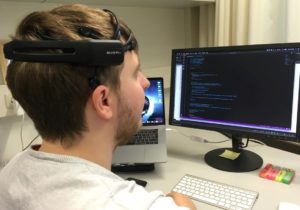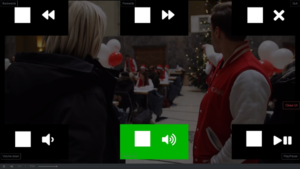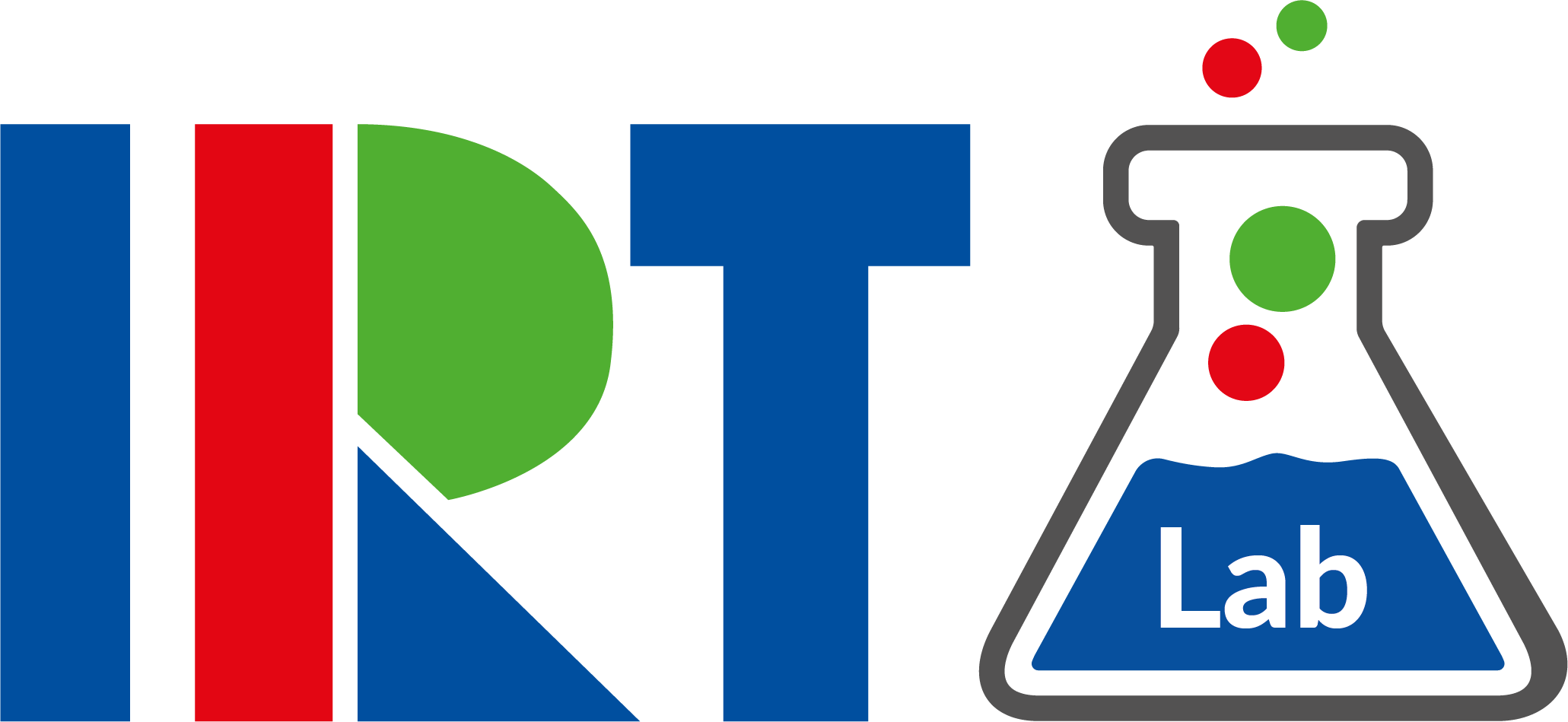Subtitles and audio descriptions are used to make the content of audio-visual media
accessible to people with visual or hearing impairments. However, for people with
severe motor impairment the obstacle usually lies ahead, in the user interfaces that
should give access and control over the media content.
With this project IRT
wants to think outside the box and investigate the potential of
Brain-Computer-Interfaces (BCI). The goal is to enable people with all kinds of
disabilities to enjoy broadcast content.
A Brain-Computer-Interface describes an interface between the human
brain and a computer that uses brain signals, so-called EEG (Electroencephalography)
as a direct source of information. Therefore, no control over the muscles is
required as it is necessary in communication where people use speech or gestures.
This makes BCIs highly interesting for the field of accessibility.
The research
for Brain-Computer-Interfaces started mainly in the 2000s but due to the development
of cost-efficient EEG devices that are accessible to end users, it gained a lot of
attention in recent years. With the increasing consume of web content the question
arose if BICs could be used to control media content in the web. What are the
requirements and remaining limitations of such applications?
To answer these
questions, IRT investigated the state of the art of Brain-Computer-Interfaces,
developed a prototype application and evaluated it by means of an user study.
Development of a prototype web application
Since the target user group are people with severe motor impairment due to illnesses
like amyotrophic lateral sclerosis (ALS) or Locked-in Syndrome, the main requirement
is a set up that is easy to use and suited for an everyday use. A good and fast
recognition rate as well as a comfortable and not too expensive device are further
important requirements. The device used in this study was the
Emotiv Epoc+, 14-channel EEG device that can be used wirelessly and is fast and easy
to set up. With under 1000 Euros it is still in the range of a high end user device.
Once several state-of-the-art methods were investigated, different concept ideas
were created and evaluated. In the end SSVEP (steady-state visually evoked
potential) was chosen as the most suited method. This concept uses visual
stimulation – in form of high contrast flashing – to trigger specific responses in
the user’s EEG data that can be filtered and extracted to gain the relevant
information and thus the desired action of the user. To evaluate our concept, we
built a prototype application with focus on the control of a web video player.
The device used in this study was the
Emotiv Epoc+, 14-channel EEG device that can be used wirelessly and is fast and easy
to set up. With under 1000 Euros it is still in the range of a high end user device.
Once several state-of-the-art methods were investigated, different concept ideas
were created and evaluated. In the end SSVEP (steady-state visually evoked
potential) was chosen as the most suited method. This concept uses visual
stimulation – in form of high contrast flashing – to trigger specific responses in
the user’s EEG data that can be filtered and extracted to gain the relevant
information and thus the desired action of the user. To evaluate our concept, we
built a prototype application with focus on the control of a web video player.
 The application consists of a settings
page where training sessions can be recorded and configurations can be adjusted. It
also contains a basic video selection. The main part of the application is the user
interface that can be toggled during the video playback and is used to control the
video player only with the EEG device.
The application consists of a settings
page where training sessions can be recorded and configurations can be adjusted. It
also contains a basic video selection. The main part of the application is the user
interface that can be toggled during the video playback and is used to control the
video player only with the EEG device.
User study results
Due to the limitation in time and the early stage of development it was not possible
to do the study with participants from the target group. Nevertheless, the user
study provided valuable information about the general usability and the recognition
rate of the application.
The general usability was satisfactory, the
application was rated as intuitive. However, the headset is not comfortable enough
and the flashing which is necessary as visual stimulation was rated as rather
strenuous.
The recognition rate showed high deviations which made an evaluation
difficult as it was not quite clear where these deviations came from. On average,
the classification rate was around 50 to 60 percent which would be not good enough
for an actual application but was a promising result for our prototype.
Due to
the highly individual progression of the various diseases that can cause severe
motor impairment, the limitations and requirements of the patients differ a lot.
Some requirements and limitations have become clearer through this work, such as the
comfort of the device, the state-of-the-art method that was chosen and the
recognition rate, but there are also requirements that need more research. Besides
the need for more compatibility and standards the biggest issue is to further define
the needs of people with motor impairments and compare existing technologies,
especially eye tracking devices, to find use cases where BCIs are most useful and
needed.
Although the main focus of the accessibility work at IRT is on
subtitles, speech intelligibility and HbbTV accessibility options, the investigation
of BCI has shown that is important to keep an eye on accessibility developments
beyond the edge.
Learn more about BCIs and this research project in this video:

